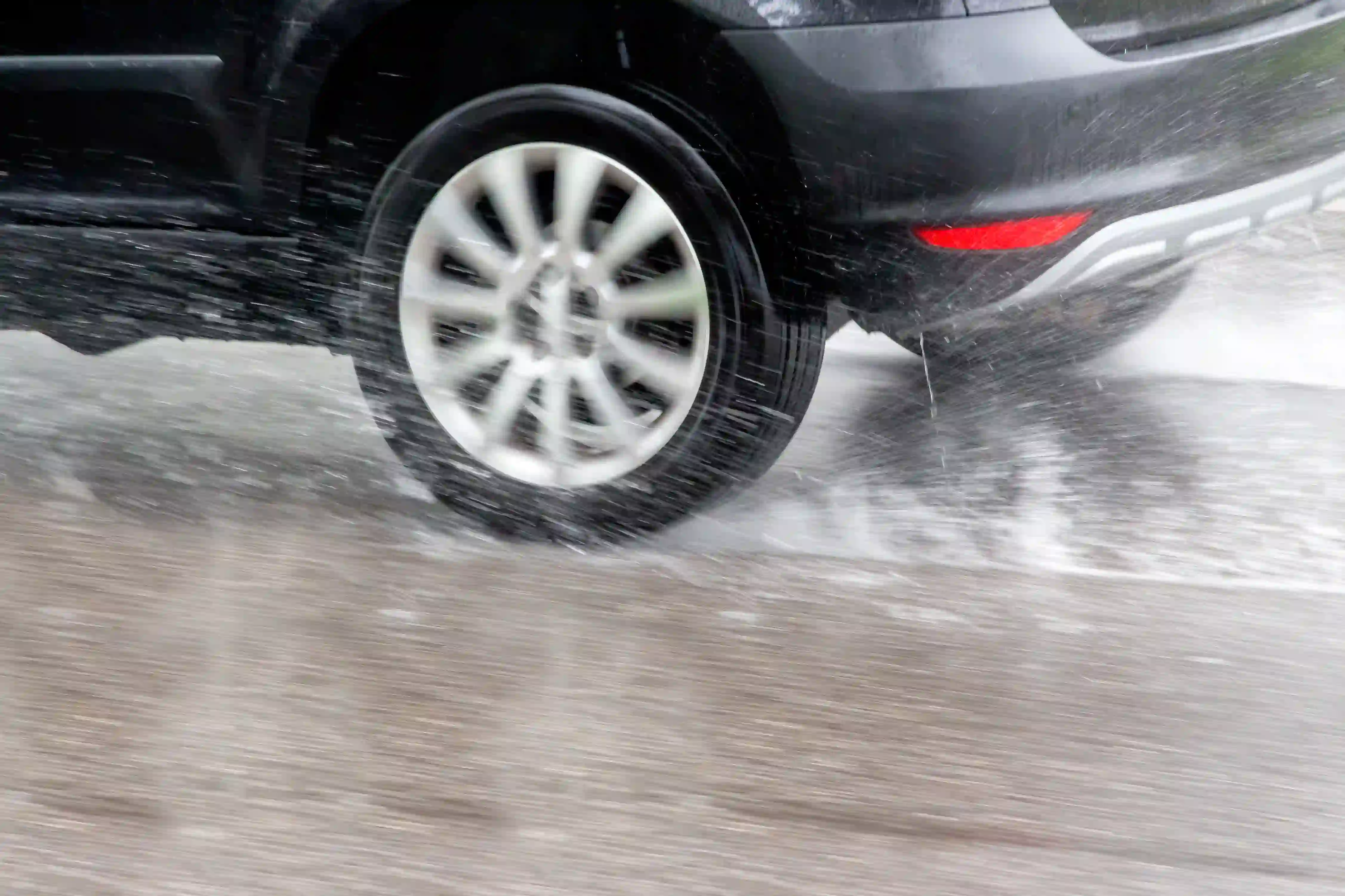>
Blog>
How To Drive In Heavy Rain SafelyHow To Drive In Heavy Rain Safely
With the cold winter months in full force, the slippery surfaces can be an absolute nightmare for some drivers. There’s no denying that heavy rain can make it much harder to navigate the road, yet some drivers are forced to go out in difficult conditions due to work or other commitments. To make sure that you can stay safe at all times, we’ve outlined our eight most practical tips for driving in heavy rain.
1. Leave the house as prepared as possible
If you know you might face more risky conditions on the road, you can do most of your preparation before leaving the house.
The most important step is to ensure that your windscreen wiper blades, both front and rear, are functioning and operational.
You should also check how much fuel you have, as driving at a slower speed, as you might do in the rain, increases fuel consumption.
Lastly, use a 20p coin to check that your tyres are of the legal tyre tread depth, as a lack of grip is the absolute last thing you want while driving in rain.
2. Fill up with fuel if you’re embarking on a longer journey
If you’re going on a journey that’s longer than a trip to the shops or work, you should consider filling up with fuel before setting off. Rain is notorious for increasing traffic, and getting stuck in traffic is known to increase your vehicle’s fuel consumption. With your heater, lights and wipers all likely to be in full use for the entire journey, your fuel economy will be reduced much more than usual.

3. How much slower should you drive in the rain
As a rule of thumb, aim to leave about twice as much space in the rain – four chevrons apart on the motorway, for instance.
Everyone knows to reduce your speed and leave more space between yourself and the car in front when it’s raining outside, but driving too slow can also be very dangerous when visibility is limited.
4. What to do if you aquaplane
If you lose control of the car and start to aquaplane, it’s a natural response to immediately brake or overcorrect the steering. However, it might be one of the worst things you can do.
This is what to do if you aquaplane:
- In order to regain grip, ease your foot off of the accelerator.
- Braking is ineffective because your tyre has already lost contact with the road, and suddenly moving your steering could cause you to spin out of control even more.
- Try and hold the steering wheel straight as possible.
- If you have it on, make sure you turn off cruise control.

5. Stay on top of your visibility at all times
You might want to put on an extra layer or two when getting dressed, as the best way to prevent mist on your windows is to switch on your air conditioning. Additionally, use your headlights when necessary and be aware of any large vehicles such as buses and lorries, as they will create large amounts of spray.
6. If you break down, keep your bonnet closed
While you might want to investigate the issue yourself, opening up your engine in torrential rain can cause significant damage to your electrical system. Instead, wait for assistance to arrive and allow them to judge the situation. With any luck, the rain will have calmed down by then.
7. Use a low gear and high revs to get through any unavoidable puddles
If faced with a large puddle that you can’t avoid on your drive, the best way to get through it is by keeping your car in lower gear while revving the engine.
What does that actually look like? Let us explain:
Exact advice varies by the size of the puddle, but driving in second gear is usually a safe bet.
By doing so, you’ll be able to maintain the momentum of your vehicle and create a bow wave in the water to avoid getting bogged down.
Once you’ve cleared the puddle, lightly apply the brakes in order to generate heat in the tyres and evaporate any remaining moisture.
8. Be considerate to others using the roads
If you’ve ever been unfortunate enough to get splashed by a vehicle driving through a large puddle while walking on the pavement, you know exactly how unpleasant it is. As part of staying alert to your surroundings while driving in heavy rain, try to also be considerate to others using the roads. This can include driving slowly through puddles near pedestrian areas, being patient with any cyclists who are also facing the adverse conditions and giving other drivers plenty of space on the road.
Related Posts